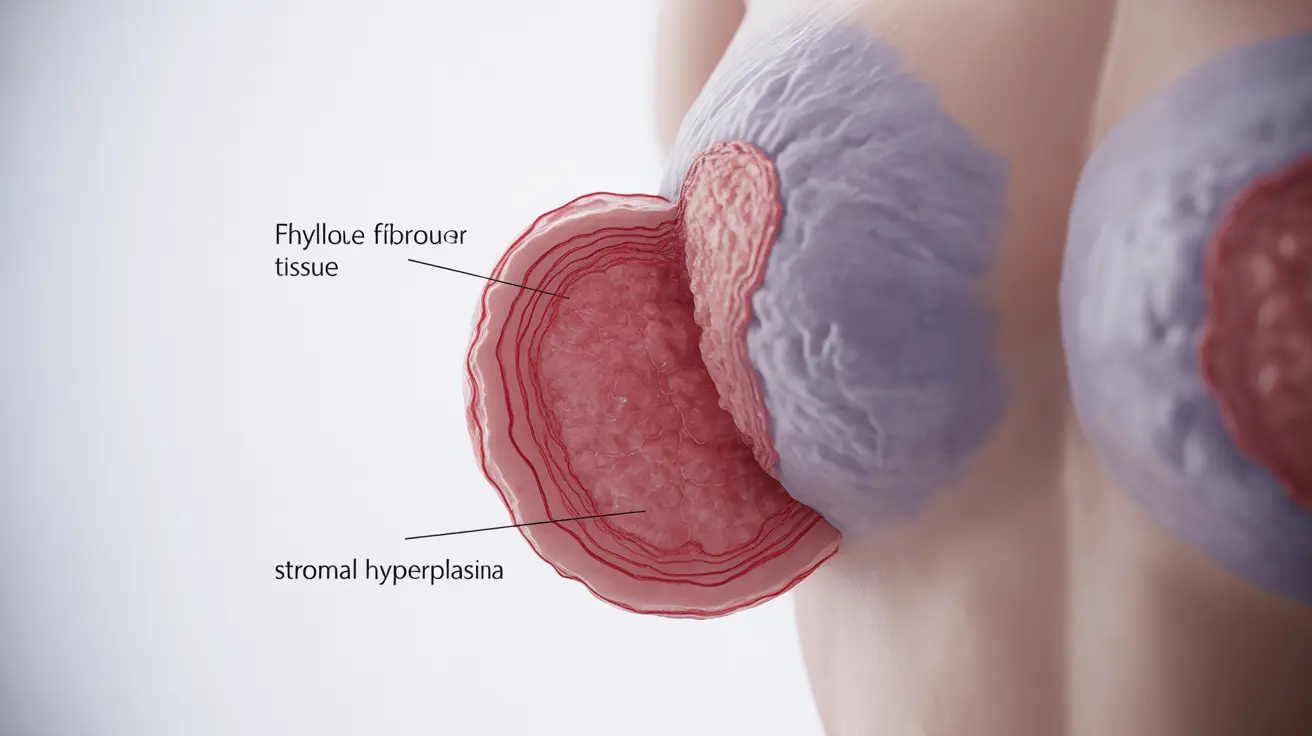When discovering a breast lump, understanding the distinction between phyllodes tumors and fibroadenomas is crucial for proper diagnosis and treatment. While both are solid breast masses that primarily affect women, they have significant differences in their characteristics, behavior, and required medical interventions.
This comprehensive guide explores the key differences between these breast tumors, helping you understand their unique features, diagnostic processes, and treatment approaches.
Understanding Phyllodes Tumors and Fibroadenomas
Phyllodes tumors and fibroadenomas are both classified as fibroepithelial lesions, meaning they develop from the breast's connective tissue. However, they possess distinct characteristics that set them apart:
Characteristics of Phyllodes Tumors
Phyllodes tumors are relatively rare breast masses that can grow rapidly and reach considerable sizes. They typically develop in women between 40-50 years of age, though they can occur at any age. These tumors are characterized by:
- Rapid growth pattern
- Larger average size (often exceeding 4-5 cm)
- Firm, well-defined borders
- Potential for both benign and malignant behavior
- Higher recurrence risk after removal
Characteristics of Fibroadenomas
Fibroadenomas are the most common benign breast tumors, particularly among young women. Their key features include:
- Slow, steady growth
- Smaller size (typically 1-3 cm)
- Smooth, rubbery texture
- Generally benign nature
- Low recurrence risk
Diagnostic Approaches
Accurate diagnosis is essential for appropriate treatment planning. Healthcare providers typically use a combination of methods:
- Clinical breast examination
- Imaging studies (mammogram, ultrasound)
- Core needle biopsy
- Surgical biopsy (when necessary)
Treatment Strategies
Phyllodes Tumor Treatment
Treatment for phyllodes tumors typically involves:
- Wide surgical excision with clear margins
- Regular monitoring for recurrence
- Possible additional treatments for malignant cases
- Follow-up imaging studies
Fibroadenoma Treatment
Management of fibroadenomas may include:
- Observation with regular monitoring
- Surgical removal if desired or indicated
- Minimally invasive alternatives in some cases
Frequently Asked Questions
What are the main differences between phyllodes tumors and fibroadenomas in the breast?
The main differences lie in their growth patterns, size, and potential for malignancy. Phyllodes tumors typically grow faster, reach larger sizes, and can potentially become malignant. Fibroadenomas are usually smaller, grow slowly, and remain benign.
How can doctors tell if a breast lump is a phyllodes tumor or a fibroadenoma?
Doctors use a combination of clinical examination, imaging studies (ultrasound and mammogram), and biopsy results to differentiate between these tumors. The growth rate, size, and cellular characteristics revealed through biopsy are key diagnostic factors.
What are the treatment options for phyllodes tumors compared to fibroadenomas?
Phyllodes tumors typically require surgical removal with wide margins to prevent recurrence. Fibroadenomas often can be monitored without intervention, though some patients opt for removal for peace of mind or comfort.
Can phyllodes tumors become cancerous, and should they be removed even if benign?
Yes, phyllodes tumors can be benign, borderline, or malignant. Even benign phyllodes tumors are usually removed due to their growth potential and risk of becoming larger or more aggressive.
What symptoms might suggest a phyllodes tumor instead of a fibroadenoma?
Rapid growth, larger size (typically over 4 cm), and changes in the overlying skin or breast contour are more suggestive of a phyllodes tumor. Fibroadenomas tend to grow slowly and maintain a consistent size.




